There are approximately 180 Peace Corps volunteers in Nicaragua separated through 5 sectors: Community Health, Small Business, Environment, English, and Agriculture. Every 4 months a new group and sector/s arrives to Nicaragua. The newest group, Health 52 arrived on the 20th of January. After the 12 week pre-service training they will be the 52nd group of PCVs to serve in Nicaragua the land of lakes and volcanoes. From Sunday Feb. 21 through Wed. the 24th a trainee came to visit me in my site to get a real glimpse and perspective of the life of a PCV. Unfortunately the trainee might have gotten a “too real glimpse” of a day in the life of a PCVs experience when the 4 wheel drive ambulance that we were riding in broke down, leaving us waiting for 2 hours. We were riding with the male chauffer and another male employee who works in the malaria and dengue fever department. Both of these men (a bit too stubborn and too machista or “macho”) were convinced that we had run out of gas and that the gas tank needle that was showing a quarter tank of gas left was inaccurate. So we waited 2 hours for a health center employee to bring us a few gallons of gasoline on his motorcycle, while the “muchachos” were “playing” under the hood of the ambulance trying to figure out the problem. Well, to the surprise of the two male health center employees (and not so much a surprise to the trainee and me) the addition of gasoline didn’t fix the problem with the ambulance and it still didn’t start, so we ended up waiting about 1 more hour for a large truck to tow us with a chain (like a makeshift tow truck from the States) back to the main highway where we waited another 30 minutes for the friendly mayor’s garbage truck to tow us the rest of the way to San Isidro. The main reason I took the PCT-Peace Corps Trainee up with me to the rural community was to get a pretty view of the municipality of San Isidro as well as to know the process of picking up pregnant women. We were dropping off a mother who recently gave birth and her new born to her community about 3,500 feet above sea level and picking up another pregnant woman who was close to her delivery date. Part of the Ministry of Health’s battle against maternal and infant mortality rate is to bring pregnant women who live in rural communities that are located far from any health clinic or hospital (who are a few weeks from their delivery date) to a “Casa Materna” a house for pregnant women (most municipalities with a health center have in Nicaragua have a Casa Materna) to provide the pregnant woman easy access to doctors and access to the health center or ambulance to give birth. The idea is to discourage women from giving birth in their homes, since many complications can arise when giving birth in a home far from the human and medical resources that a hospital or health clinic can provide.
On Friday, February 5th, I gave a lesson on “teaching health in the classroom” with a fellow volunteer who is also from Minnesota. We covered how to get started in your site teaching classes such as getting to know the school superintendent, how to plan and make a class on a health theme (self-esteem, nutrition, birth control) and how to make these classes dynamic and participative. It was fun remembering back to my Pre-service Training (PST) and realizing how far I have come in my life experiences and Peace Corps experience within one year of being in Nicaragua.
There is a logical and natural sort of seniority or rank that exists in any business, government or institutional setting. In the Peace Corps, I am now about half way through my 2 year service, which means I have gained enough experiences to be able to train and give advice to new groups of future Peace Corps volunteers. After the training lesson, I was able to experience my first Cinema Experience in Managua, in a mall called “Las Galerias” a very shee, shee, upscale mall only for the most wealthy and upper class of Nicaraguans. It had very comfortable seats just like any cinema you might go to in the United States. We watched “Sherlock Holmes” featuring Robert Downey Jr. The movie was in English with Spanish sub-titles, so the experience was not hindered in anyway. When compared to the prices of movies in the United States it’s a lot cheaper (75 Córdobas or $3.50), but when taking into account the reality of living in Nicaragua, where everyone earns in Córdobas not dollars (even us PCVs), it’s pretty expensive for the average Nicaraguan.
I also applied and got accepted to be a Peer Helper (Peer Support Network Facilitator). This is a group of volunteers who have received trainings on active listen and on the specific support resources that the Peace Corps and the U.S. government provide to volunteers in Nicaragua. They also are a resource for other volunteers who are going through trying times during their service to look to and help them cope with their problem and move forward to have a successful service. We have our first PSN training retreat coming up this month in March.
Link to Photos from rural community 3,000 feet above and from Cerro de la Cruz, overlook of urban area, San Isidro
http://picasaweb.google.com/nick.halbert
I also have recently posted photos on my Facebook.
Tuesday, March 2, 2010
Subscribe to:
Post Comments (Atom)
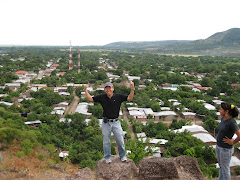



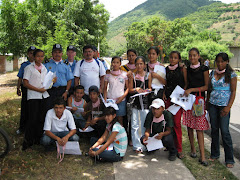


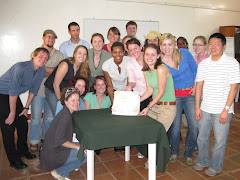
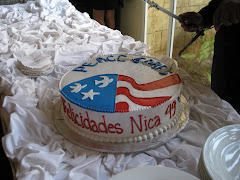
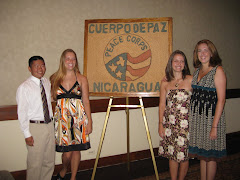
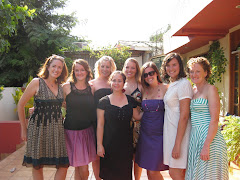
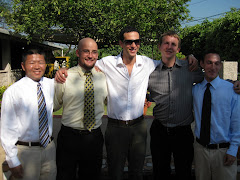
No comments:
Post a Comment